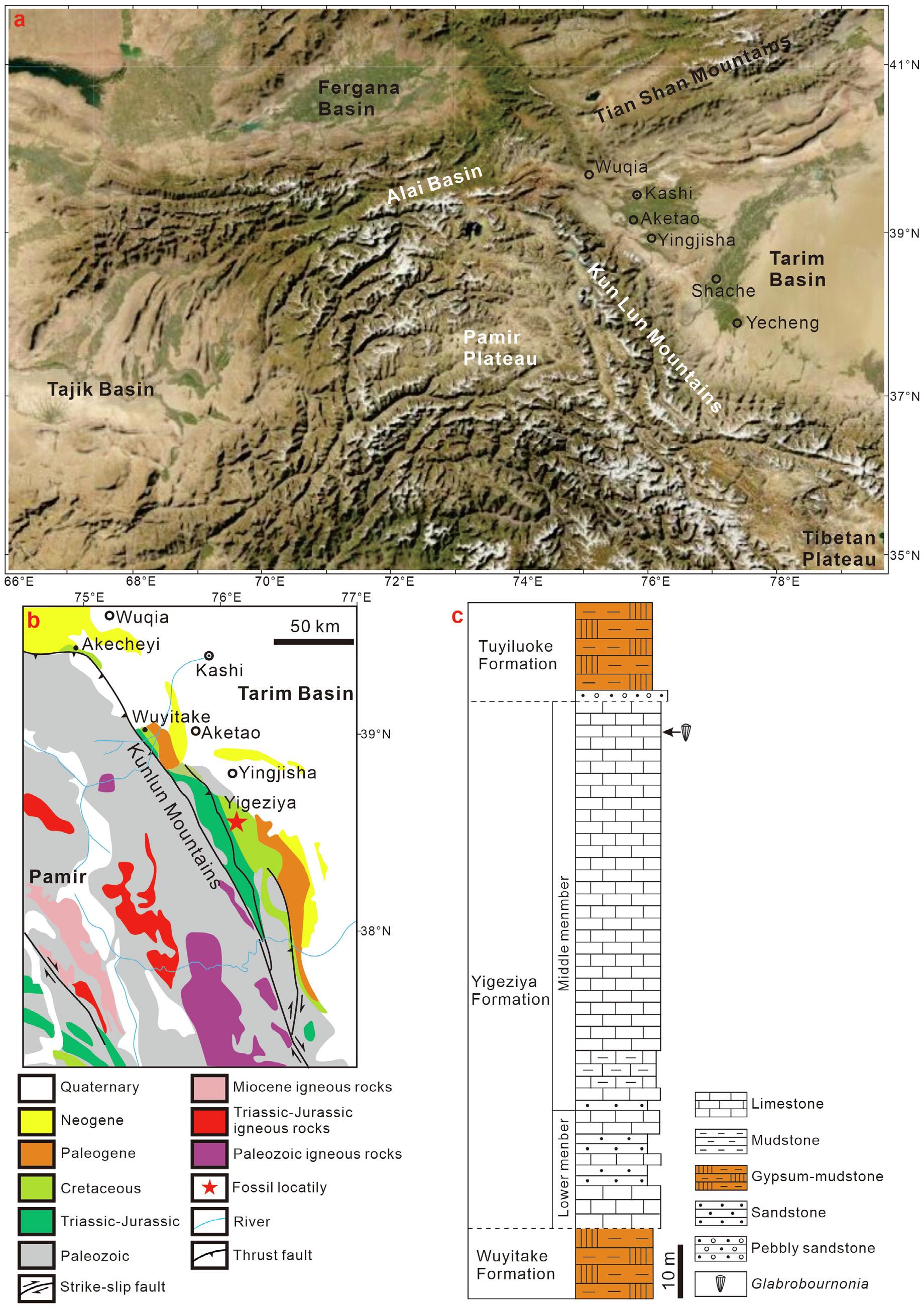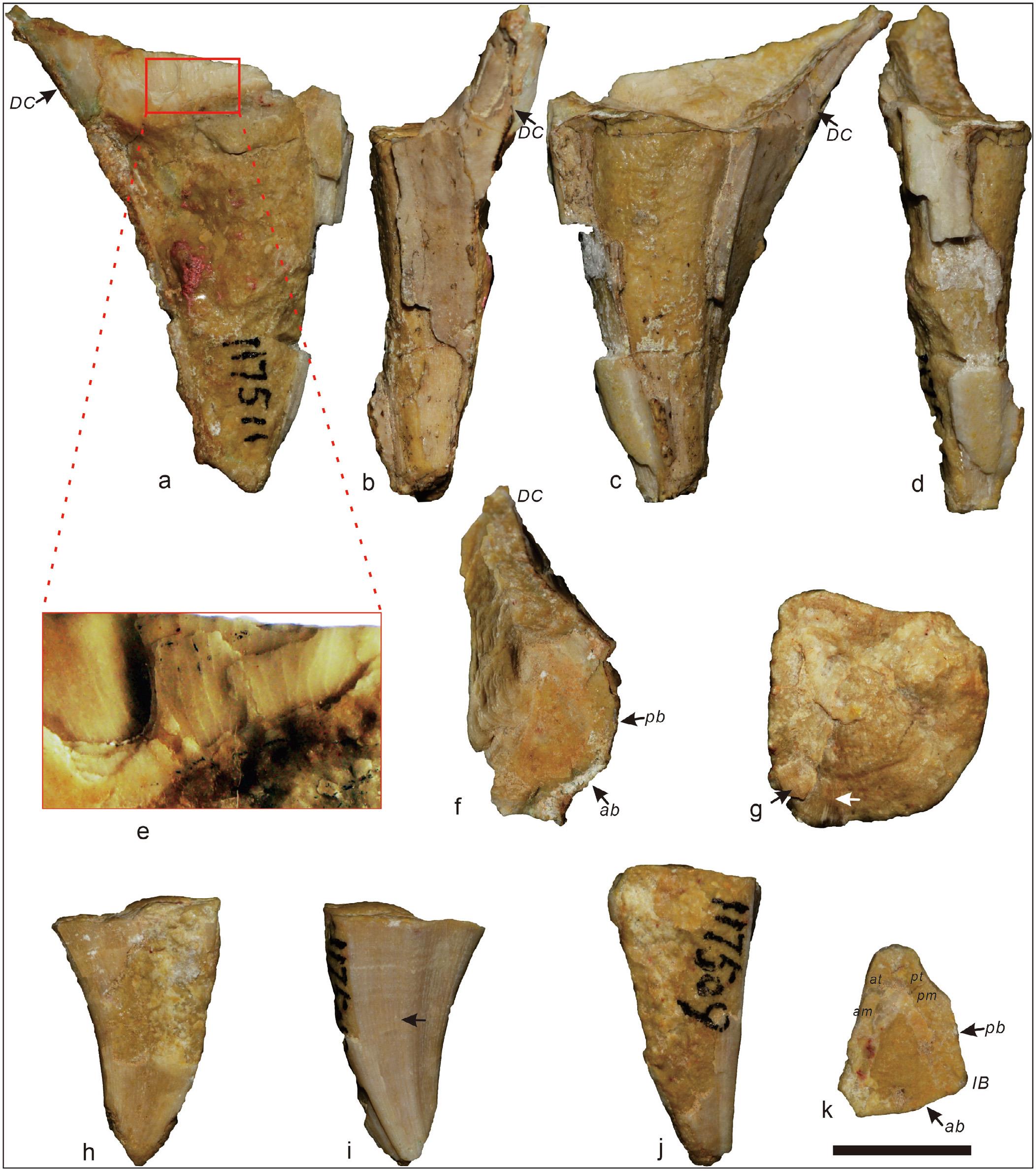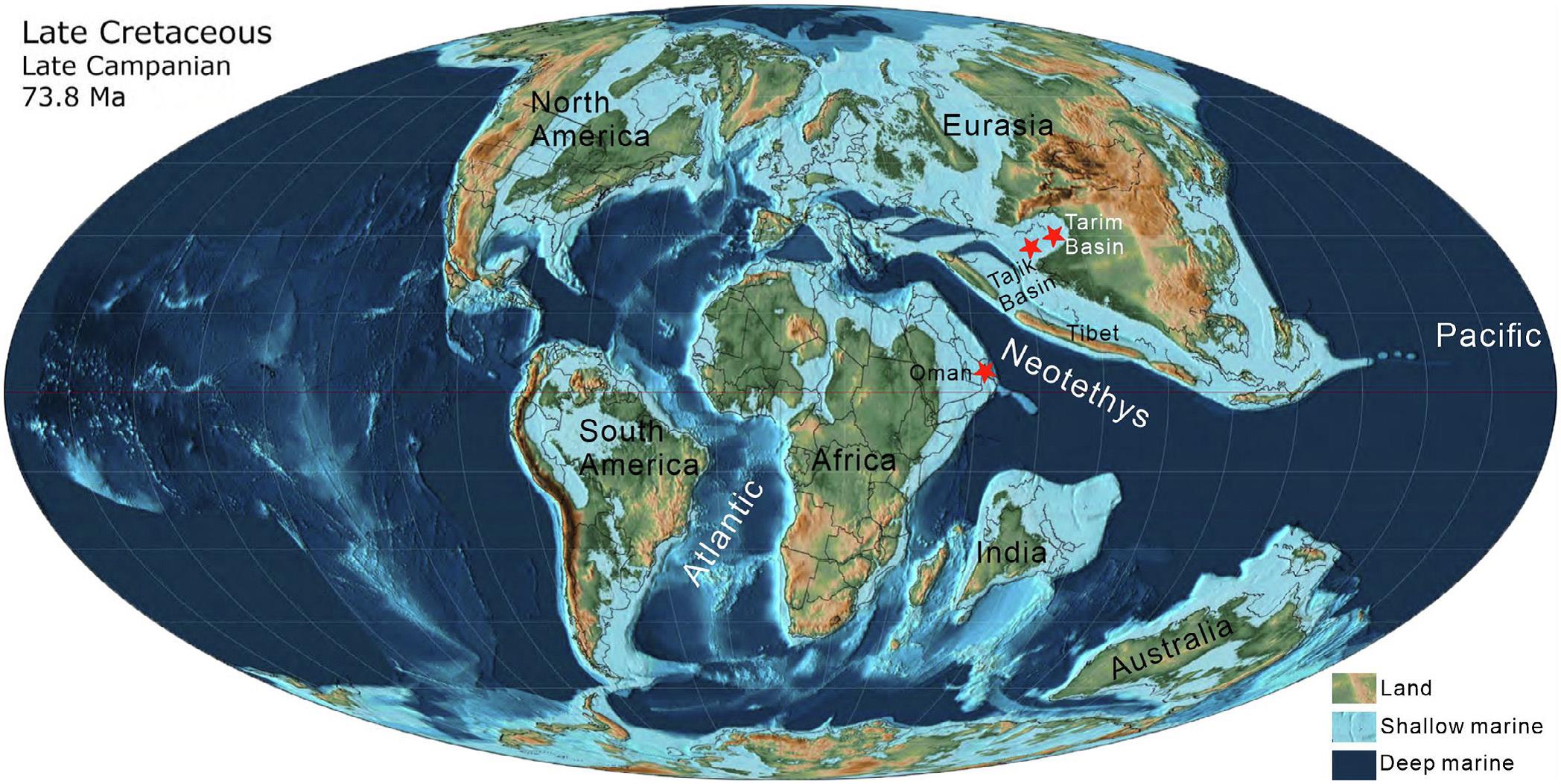During Cretaceous to Paleogene, a shallow epicontinental sea extended across Eurasia from the Mediterranean Tethys to the southwestern Tarim Basin. Its eastern extremity is called the Tarim Sea, which is commonly regarded as a branch of the Neotethys.
Two distinct transgressive events in Tarim Sea during Late Cretaceous led to the deposition of early Cenomanian to Turonian Kukebai Formation and the Campanian to early Maastrichtian Yigeziya Formation. Abundant rudist bivalves have been reported from the Yigeziya Formation, most of which were considered as endemic taxa that were restricted to central Asia including Tajik, Fergana, Alai and Tarim basins.
Recently, Dr. RAO Xin from the Nanjing Institute of Geology and Palaeontology of the Chinese Academy of Sciences (NIGPAS) and her colleagues restudied the bivalves of the Yigeziya Formation on account of the published and new specimens.
Based on the correlation of the bivalve assemblages from the Tarim Basin and the other regions of the Tethyan realm, the researchers revealed the palaeobiogeographic affinity between the central Asia, Afghanistan, Iran, and United Arab Emirates and Oman of the eastern Arabia during the Campanian and Maastrichtian times.
The study was published in Palaeoworld on May 23.
The researchers focused on the specimens that were identified as Biradiolites minor from the Yigeziya Formation, and transferred it to the genus Glabrobournonia according to the taxonomic re-examination.
Apart from southwestern Tarim Basin, Glabrobournonia minor has also been recorded from the late Campanian of Fergana and Alai basins. Previously, Glabrobournonia has only been described from the United Arab Emirates and Oman of the eastern Arabia. The paleogeographic distribution of Glabrobournonia suggests that this genus dispersed to central Asia from the Campanian time, and became widely distributed in the eastern Tethyan region rather than endemic to eastern Arabia. Biradiolites ingens from the Campanian to Maastrichtian of Mediterranean Tethys could be the direct ancestor of Glabrobournonia.
In Late Cretaceous, the central Asian basins, Afghanistan, and Iran were pertained to the northern margin of eastern Tethys, while the United Arab Emirates and Oman of eastern Arabia were located on the southern margin of eastern Tethys. The similarity of the rudist assemblages between these regions suggests a faunal connection and affinity between the north and south margins of the eastern Tethyan realm during Campanian to early Maastrichtian times.
These findings will contribute not only to the bivalve study, but also to the study of Cretaceous palaeobiogeography and Tethyan evolution.









